BETTER TOUCH BETTER BUSINESS
Contact Sales at KAIDI.
Level measurement is an important part of industrial process control, and choosing the right level meter directly affects the safety and operational efficiency of the system. Glass tube level meter and magnetic flip-plate level meter are two common types of level measurement devices, however, in practical application, magnetic flip-plate level meter has become a more widely recommended choice due to its superior durability, safety and automation capability under the guidance of many industry standards (e.g. GB/T 21446-2008 “Magnetic Flip-plate Level Meter”). In this article, we will compare the two in detail and highlight the advantages of magnetic flip-plate level meters.
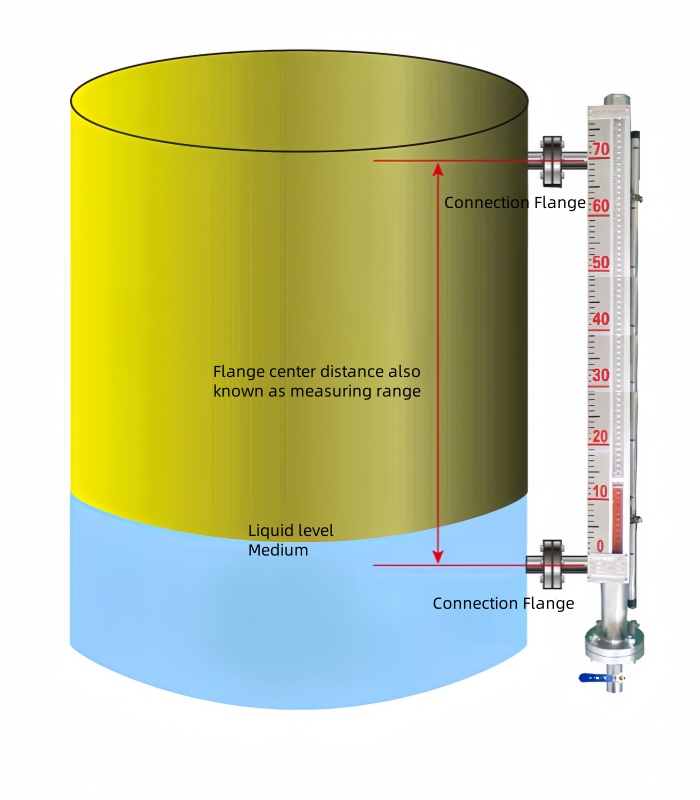
Comparison of Measuring Principles
Glass tube level gauge
Glass tube level gauges are based on the connecting device principle, whereby changes in the level of the liquid in the vessel are reflected directly in the glass tube. The operator observes the liquid level through the transparent glass and some models are equipped with a scale to improve readability.
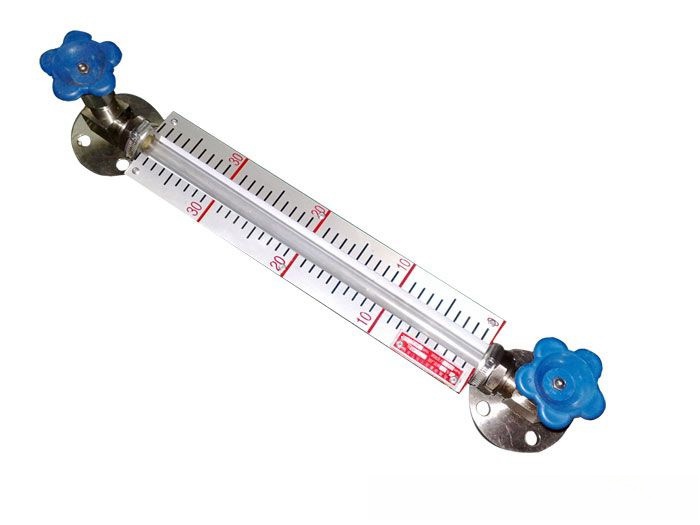
Magnetic Flip-Flop Level Gauge
Magnetic Flap Level Gauge utilizes the buoyancy principle and magnetic coupling technology, the change of liquid level drives the magnetic float to move up and down in the measuring tube, and at the same time drives the two-color flip flop of the external indicator to realize the liquid level display. Modern magnetic flap level gauge can be equipped with remote transmitter (4-20mA, current loop, HART protocol, etc.), integrated into the automation system to realize remote monitoring and alarm.
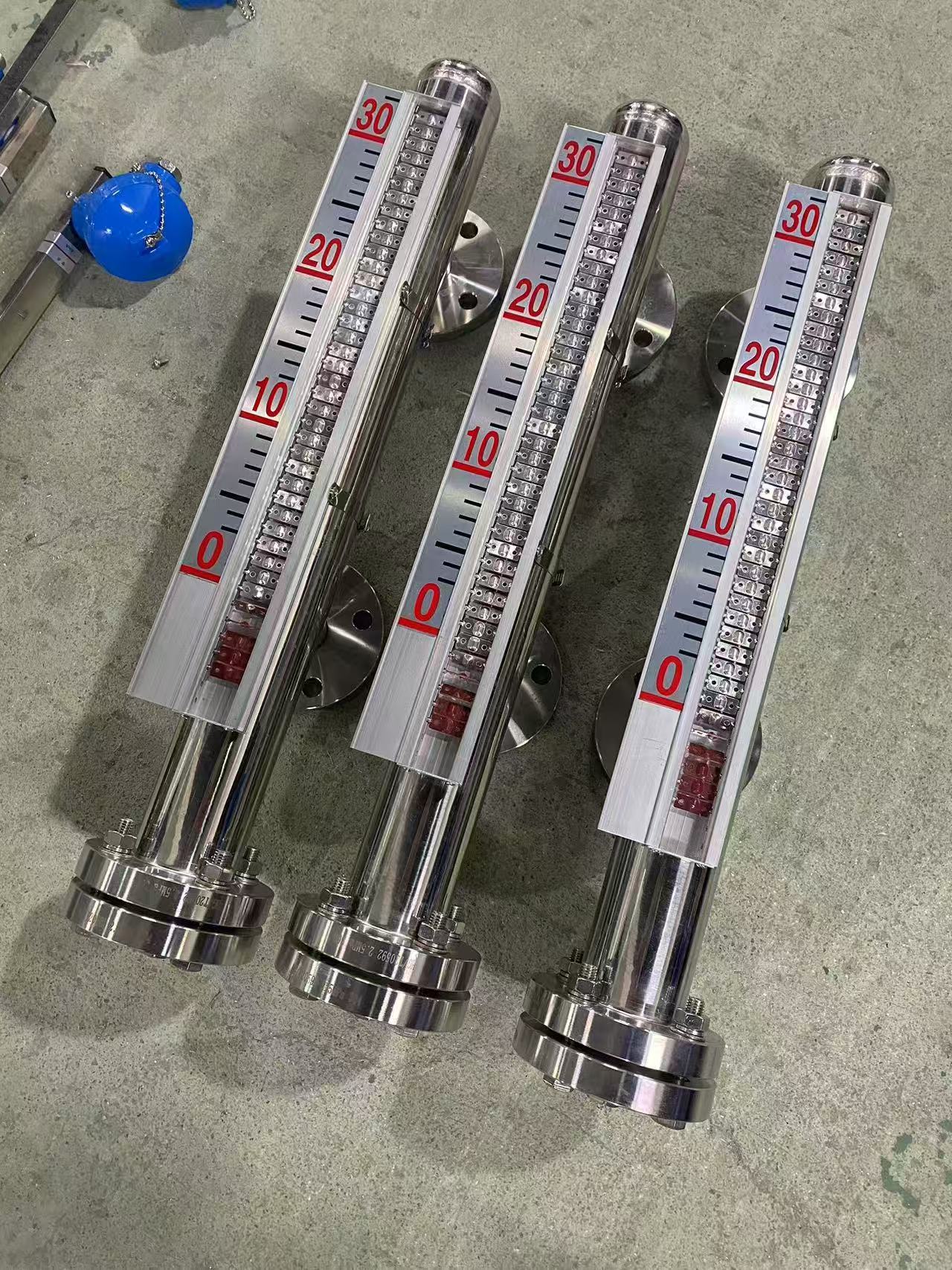
Comparison of applicable working conditions
The industry standard GB/T 21446-2008 puts forward specific requirements for the application environment of the magnetic flip-plate level gauge, which is designed to meet the measurement needs of high temperature (>400℃), high pressure (up to 10MPa) and strong corrosive media. In contrast, the glass tube level gauge has a narrower scope of application, usually for low to medium temperatures (generally <150 ℃, special models up to 400 ℃), low pressure (<1MPa) and non-corrosive media.
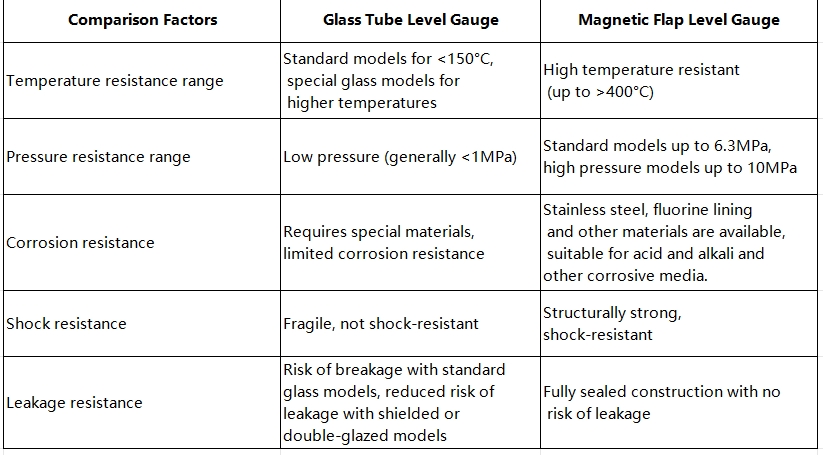
Safety Comparison
The safety of liquid level measurement is of paramount importance, especially in the petrochemical, chemical and pharmaceutical industries, where any leakage can cause serious accidents.
▶ Glass tube level meter has a large safety risk without protection, the glass material is fragile, especially at high temperature or pressure fluctuation, the risk of rupture increases, which may lead to
liquid leakage or operator injury. Part of the model adopts protective cover, wire mesh protection or double glass structure, which can reduce the risk of rupture to a certain extent.
▶ Magnetic Flip-Flop Level Gauge adopts fully sealed design without the risk of glass rupture, which is especially suitable for the measurement of toxic and flammable media
(e.g. chemical solvents, liquefied gas, etc.). Therefore, in the safety management system of liquid level measurement, magnetic flip-plate level gauge is often a safer choice.
Readability and remote monitoring capabilities
▶ Glass tube level meter has limited visualization range, the liquid level needs to be read accurately under well-lit, close range conditions, and the remote operation is inconvenient, which can't meet the needs of modern industry for remote monitoring.
▶Magnetic Flip-Flop Level Gauge has the ability of long-distance visualization and telecommunication, and its two-color flip-flop design makes the liquid level display clear and still readable even in general light environment. However, in very dark environment, auxiliary lighting or reflective coating is still needed to improve readability. At the same time, it is equipped with a magnetic flip-flop remote transmitter that can convert the liquid level signal into 4-20mA or HART signal, which is easy to be integrated into DCS (Distributed Control System) or SCADA (System for Data Acquisition and Supervisory Control), realizing automated monitoring and remote control.
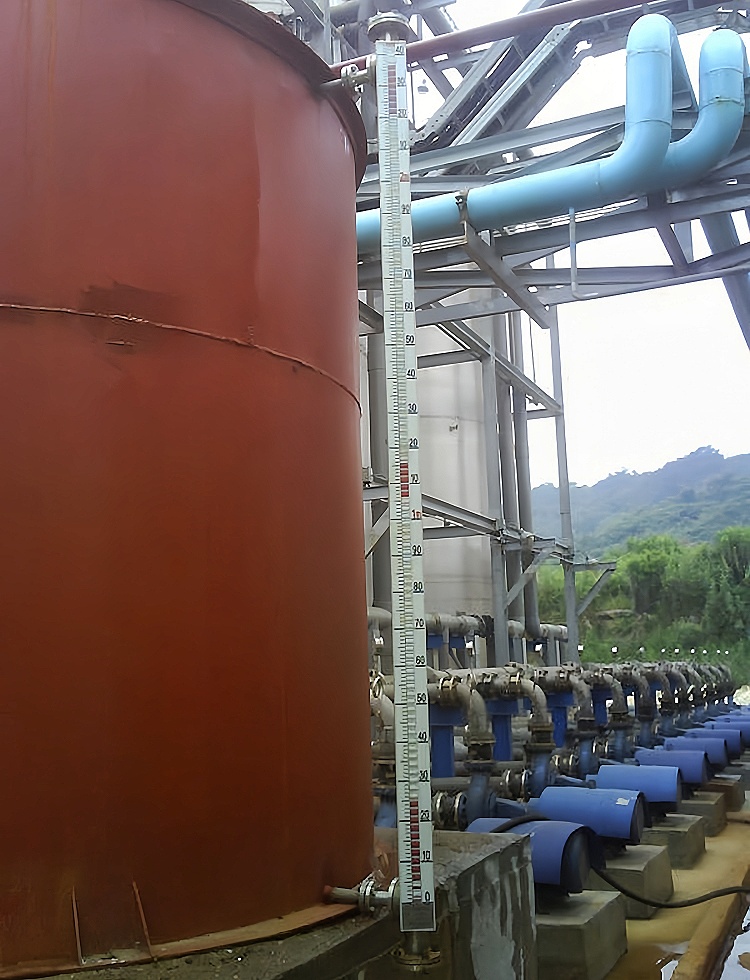
Maintenance and service life
The main maintenance issues for glass tube level meters include:
▶ Glass tubes are prone to scaling, which affects reading accuracy and requires regular cleaning;
▶ Aging of seals or glass breakage, requiring frequent replacement and high long-term operating costs.
Magnetic Flip Plate Level Gauges are relatively low maintenance:
Magnetic Flip Plate Level Gauges are relatively low maintenance:
▶ No glass parts, no risk of breakage;
▶ Good sealing for long term operation, only the magnetic float and indicator status need to be checked periodically;
▶ Because there are no mechanical transmission parts, the service life can be more than 10 years, and the maintenance cost is much lower than that of glass tube level meter.
Comprehensive conclusion: why is the magnetic flap level meter better?
According to GB/T 21446-2008 and other industry standards, magnetic flap level meter occupies a dominant position in modern industrial measurement because of its high safety, adapting to complex working conditions, strong telecommunication ability and low maintenance cost. In contrast, glass tube level meter is suitable for routine working conditions, but cannot meet the demand in high temperature, high pressure, corrosive environments or scenarios requiring remote monitoring.
In addition, API 2350 focuses on the safety management of liquid level measurement and does not mandate the recommendation of magnetic flap level meters, but rather suggests the use of level measurement devices (e.g. radar, ultrasonic, float level meters, etc.) that comply with safety requirements. With its excellent safety performance and automation capability, magnetic flap level gauge is widely used in tank level measurement, but it is not the only option under API 2350 standard.
Taken together, for critical level measurement in petrochemical, chemical, metallurgical, pharmaceutical and other industries, the magnetic flap level gauge is undoubtedly a more reliable, safer and smarter choice.
We are here to help you! If you close the chatbox, you will automatically receive a response from us via email. Please be sure to leave your contact details so that we can better assist